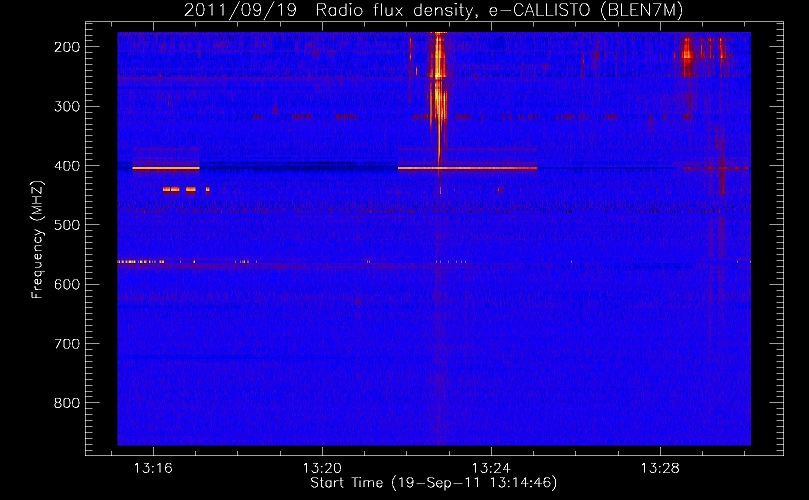Combined Investigations of Solar Bursts Type III and V
CALLISTO, Astronomy Astrophysics
DOI:
https://doi.org/10.14331/ijfps.2012.330032Keywords:
Solar radio burst, solar flare, type III, type V, CALLISTOAbstract
This review intended to update the results of combination two burst, type III and V in one solar flare event. Magnetic reconnection of both burst will be explained theoretically. Both bursts are found on 19th September 2011 associated with C-class flares on active region 1295. We concentrate on the mechanism of evolution the bursts which play a role in the event. It is found that type V burst appeared with five second after type III. There are a few sunspot regions on the solar disk but most are magnetically simple and have remained rather quiet. An interpretation of this new result depends critically on the number of sunspot and the role of active region 1295. Sunspot number is increases up to 144 with seven sunspots can be observed. During that event, the speed of solar wind exceeds 433.8 km/second with 2.0 g/cm3 density of proton in solar corona. Currently, radio flux is also high up to 150 sfu. Solar flare type C6 is continuously been observed in x-ray region for 24 hours since 1541 UT and a maximum C1 is detected on 1847 UT. Although the sources of both bursts are same, the direction and ejection explode differently. It is believed that the ejection of particles in type III burst is more compare type V. In summary, the behavior of type III should be critically understood in order to predict the formation of type V burst.
Downloads

Downloads
Published
How to Cite
Issue
Section
License
Copyright (c) 2020 International Journal of Fundamental Physical Science

This work is licensed under a Creative Commons Attribution 4.0 International License.










